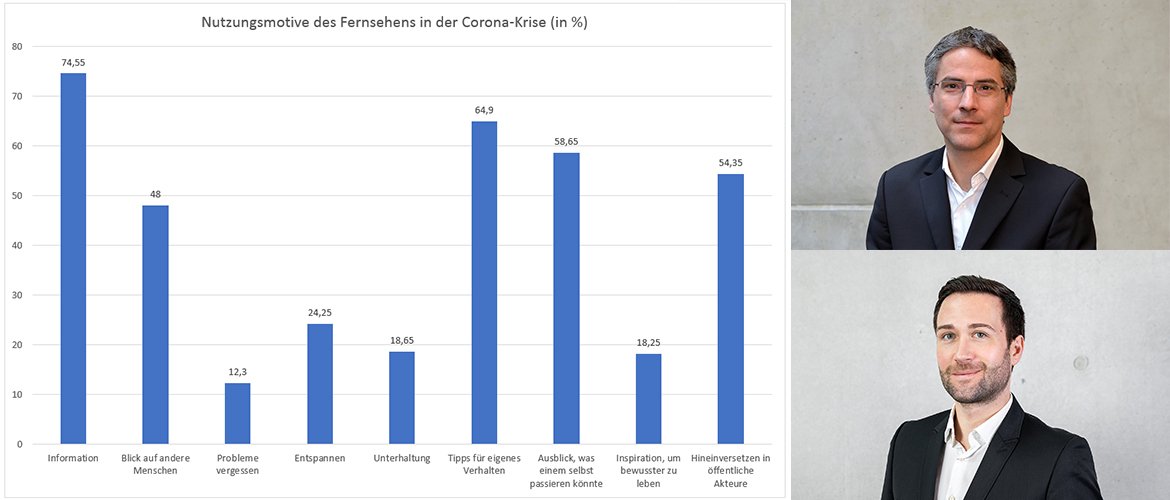
Current study shows motives for media use during the crisis
In an online survey, seven different types of media were analyzed. While already published data had shown significant increases of media use, the motives of media users had been excluded. The two researchers, University of Applied Sciences Professors, Dr. Peter Schneckenleitner and Dr. André Haller, who are both active in the Marketing and Communication Management study program as well as the Digital Marketing study program at the University of Applied Sciences Kufstein Tirol, shed light on the circumstances with their research work.
Informational media
Which media channels do people use in crisis times to find out information about the current situation? There was a clear answer to this. The number 1 information medium in the crisis is linear, classic television. Seventy-five percent of the respondents indicated that their increased TV consumption is related to searching for information. Social media at 65 percent is also strongly used for information searches.
Entertainment media
Which media channels do people use for entertainment during the crisis? Streaming services such as Netflix, Amazon Video, and the like are the preferred entertainment media. Eighty-nine percent of the respondents indicated that they use these services for entertainment. After streaming, the highest entertainment relevance was attributed to books with 76 percent, followed by social media with 70 percent, and radio with 66 percent. Entertainment on TV? Wrong. Merely 19 percent of the respondents used television for entertainment, and 24 percent of the respondents indicated that they consume TV for relaxation.
Winners and losers
Fifty-six percent of the respondents are increasingly resorting to books in the crisis time. This is the second highest number after social media. Increased use of books is primarily based on the motives of “entertainment” (76 percent), “relaxation” (74 percent), and “to forget problems” (66 percent). These are numbers that are merely comparable with streaming services.
Print media saw the largest loss of use. Printed products like newspapers or magazines have been used less during the crisis according to the study. This makes printed media the only category that has not been used more heavily during the crisis. This may also be associated with limited access to stationery points-of-sale during the lockdown. Printed media is also disappointing when it comes to motives. With around 39 percent, information searches are the strongest motive for use, which is a low number compared with other media channels.
Conclusion
“Our data shows that television has been primarily used as an information medium during the crisis. If people are looking for entertainment or relaxation, they find it in online streaming or in books. Social media lives up to its social dimensions during crises, and with 83 percent is clearly used to maintain contact with family and friends. While specific strengths became apparent for all media channels that were examined, print media remained stagnant in comparison,” the two researchers summarized.
About the study
Students at the University of Applied Sciences Kufstein Tirol between 17 and 39 years old were asked about their media use during the quantitative online survey. Seven categories of motives for using media were formed on the basis of relevant studies. The survey is not representative and was conducted in the time between April 15, 2020 and April 22, 2020.